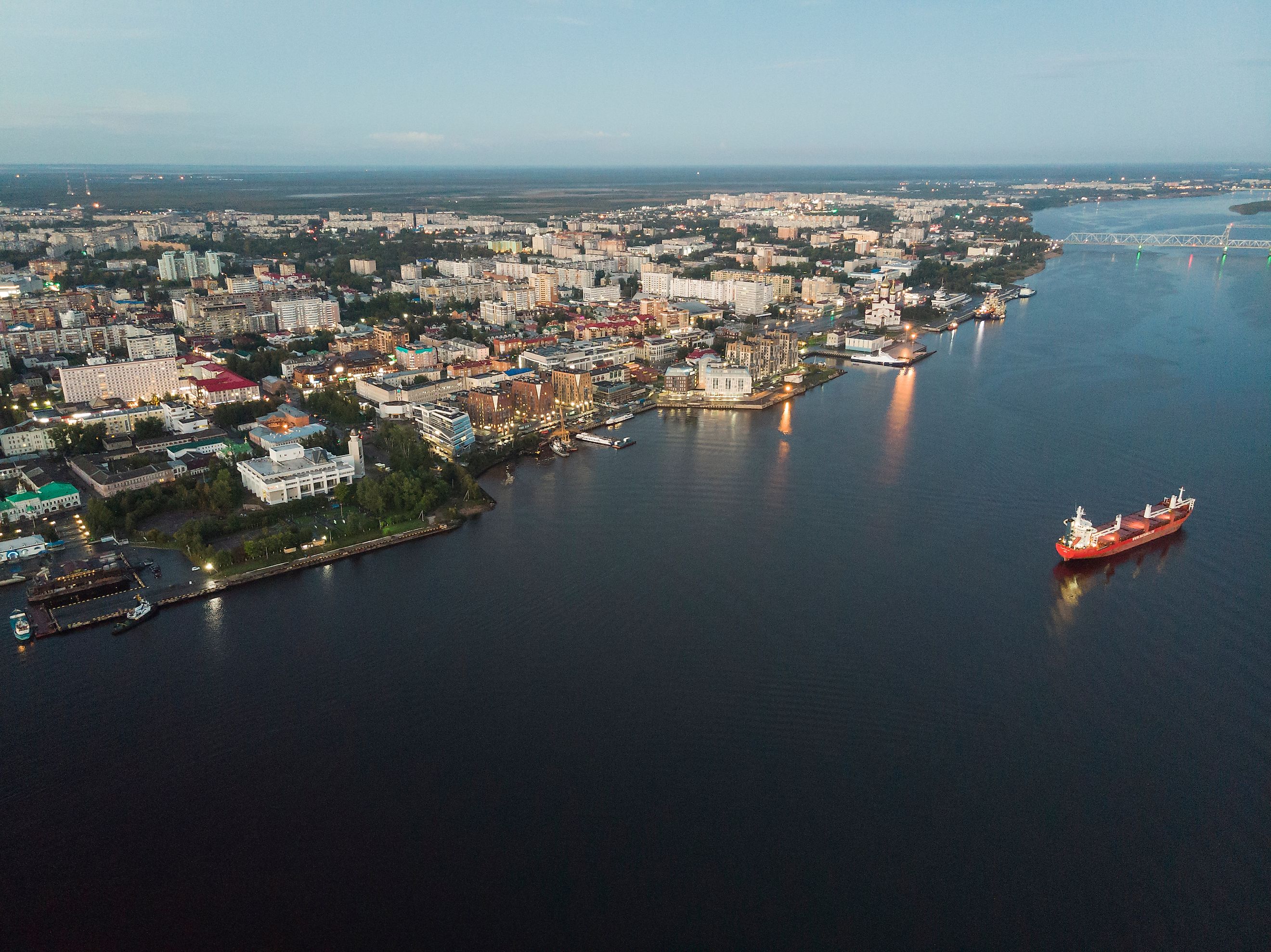
Dvina Bay
Dvina Bay, or Dvinskiy Zaliv, is one of four major extensions of the White Sea (along with the Kandalaksha Gulf, Onega Bay, and Mezen Bay), in the Northwestern region of Russia, near Scandinavia. This area falls within the jurisdiction of the Primorsky District of the Arkhangelsk Oblast – one of 46 provinces, or federal subjects, within the nation. There are two major cities at the Southern base of the bay, Arkhangelsk (Архангельск), which is the administrative center of the oblast, and Sererodvinsk (Северодви́нск), as well as many smaller towns that have sprouted up the shorelines, and across the large congregation of islands located near the delta of the Northern Dvina River. Dvina Bay has been a source of exploration and international relations (both conflict and trade) for many centuries.
Geography Of Dvina Bay
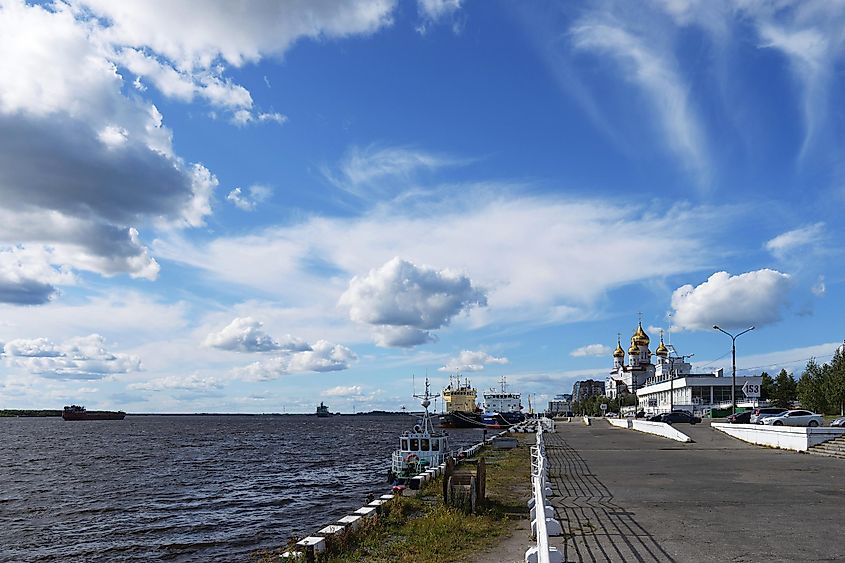
Northwestern Russia's White Sea, and its various arms, such as Dvina Bay, sprawl quite close to Finland's East-Central border. Onega Bay is to the West of Dvina, on the other side of the Onega Peninsula, Mezen Bay is to the Northeast, and Kandalaksha Gulf stretches out to the Northwest. The 93-kilometer-long (58 miles), 130-kilometer-wide (81 miles) Dvina Bay is fed by the Northern Dvina River, while the White Sea expands into the much larger Barents Sea of the Arctic Ocean.
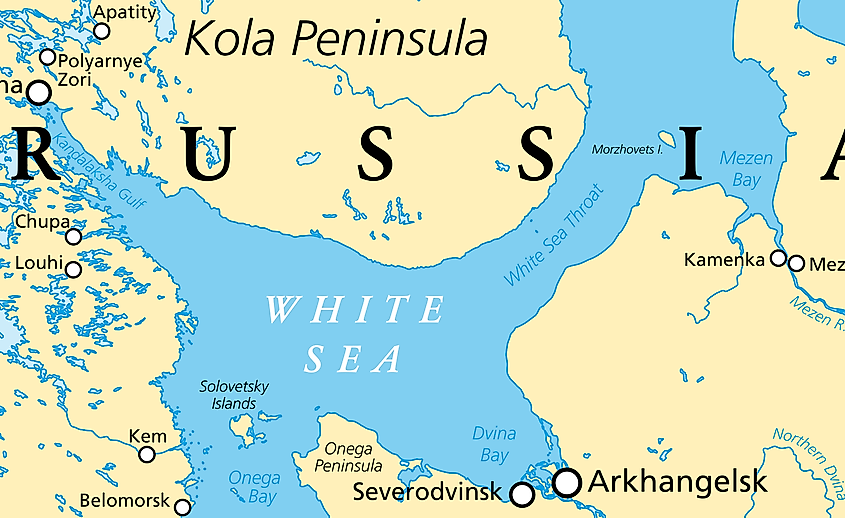
The focal point city, Arkhangelsk (estimated population: 389,742), at the Southern tip of the bay, sits 1,100 kilometers (684 miles) Northeast of Saint Petersburg and 1,250 kilometers (777 miles) North-Northeast of Moscow (great distances indeed, but comparatively close by Russian standards). The sister city of Sererodvinsk (estimated population: 183,255) is a mere 45 kilometers (28 miles) Northwest of Arkhangelsk. Many islands, some of quite notable dimensions, are grouped together at the Southern base of Dvina Bay. The Northern Dvina River fractures and surrounds these land masses on its way to the frigid waters.
Climate Of Dvina Bay
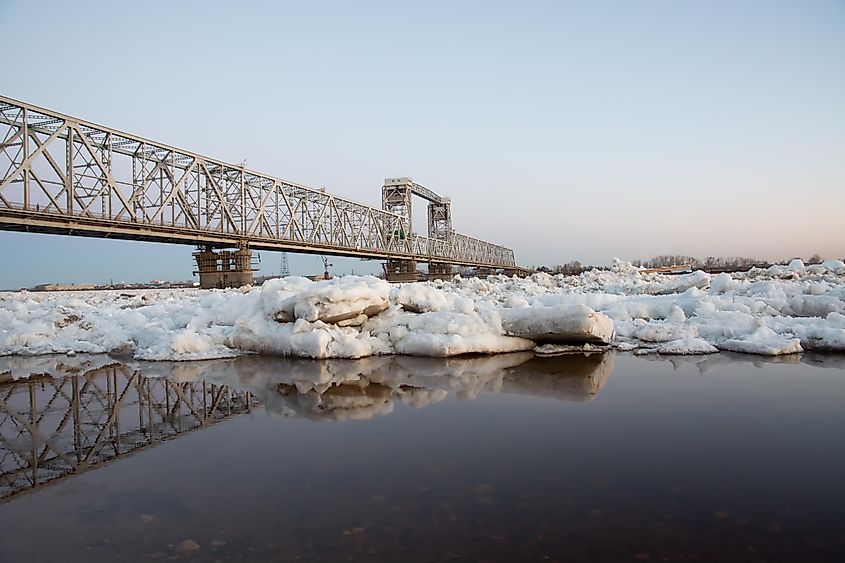
To get a sense of the climate fluctuations in the Bay area, we can look at the data of the principal city of Arkhangelsk. This part of the world experiences a subarctic climate (categorized as Dfc on the Köppen climate classification), producing continental climate patterns, which are defined by large fluctuations in temperature across the year. Arkhangelsk, and the general vicinity of Dvina Bay, is subject to long, cold, snowy winters, and short, warm, or at least pleasant, summers. Between 1991 to 2020, the average annual temperature was 1.9 degrees Celsius (35.4 Fahrenheit), with an average high of 6.0 C (42.8 F) and low of -2.0 C (28.4), and an average peak summer high of 22.1 C (71.8 F), and mean winter low of -15.2 C (4.6 F). Across this same time span, there was an average annual precipitation level of 636 millimeters (25 inches), spread across 143 rainy days, and 163 snowy days. The average relative humidity is 80%.
History And Economy Of Dvina Bay
The first people to travel to Dvina Bay and/or the surrounding area were likely the Vikings, beginning in the late 9th century. By the 13th century, the bay had been populated by the descendants of the modern-day Pomors, who at the time belonged to the medieval state known as the Novgorod Republic. The city of Arkhangelsk was founded in 1584, with the building of a fortified monastery for the archangel Michael (hence the name). This city became Russia's first port to trade with foreign countries (beginning with England). Such practices boosted the economy of the area until the government of Saint Petersburg (founded in 1703) pushed it to become the principal port for the country's Northwest region. However, the arrival of the railway in 1898 connected Arkhangelsk with Moscow, turning this Dvina Bay community into the largest timber-exporting port in Russia. Arkhangelsk also proved to be an instrumental port during both World Wars.
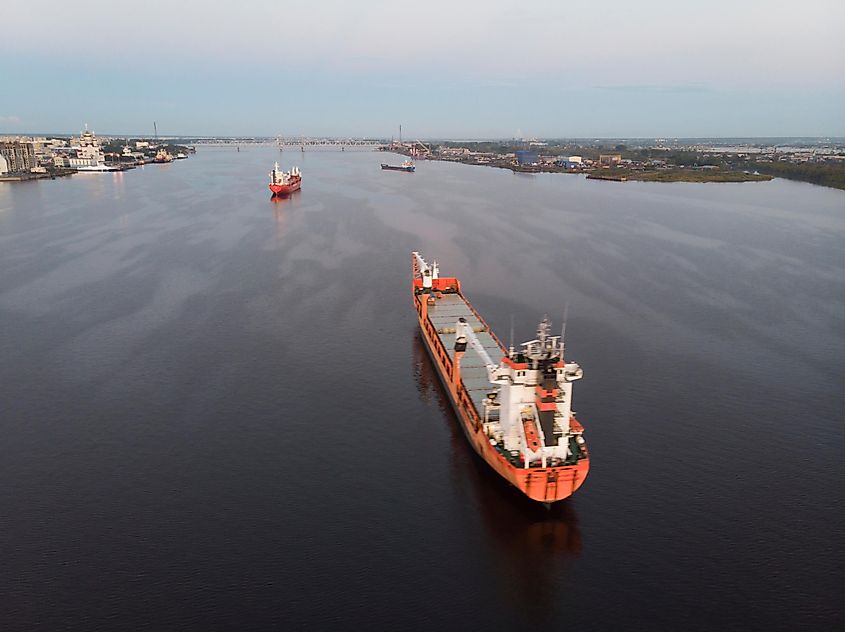
Along with timber and transportation, fishing has long been an important source of livelihood for the people around Dvina Bay – particularly the rural and isolated Pomory (a name which stems from Po moriu, meaning "by sea"). However, due to post-Soviet state mandates, there are concerns that it is too costly or logistically problematic for this ethnic group to continue their traditional salmon fishing legally. In terms of larger-scale operations, Arkhangelsk is the base for commercial fishing fleets and the Western terminus of the Northern Sea Route (i.e., the Northeast Passage).

On February 26, 2013, Onezhskoye Pomorye National Park was established on the Onega Peninsula, between Dvina and Onega Bay. This 2,017-square-kilometer (779 sq mi) sanctuary protects the coastal landscape, surrounding forests, and the animals that dwell within, such as moose, brown bears, gray wolves, and red foxes. During the summer icemelt, Beluga whales also frequent the White Sea and Dvina Bay.
Dvina Bay, an offshoot of the White Sea, is a sizable and strategic waterway in Northwestern Russia's Arkhangelsk Oblast. Though presented with harsh conditions for much of the year, various groups of people have traveled, settled, and ultimately prospered in this region for centuries. At times, the political conditions have oscillated nearly as extreme as the weather, but the human inhabitants have always demonstrated their ability to adapt and pivot. Being so close to the Arctic Ocean is evidently a double-edged sword.











